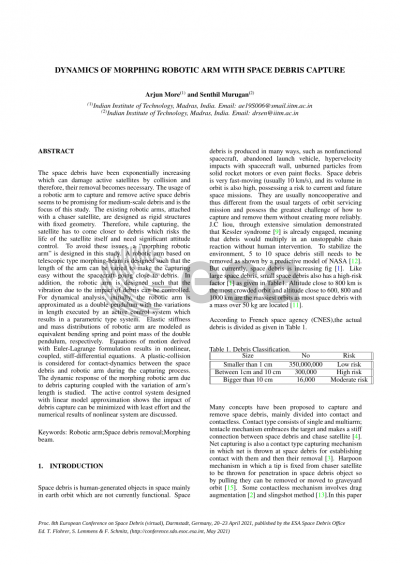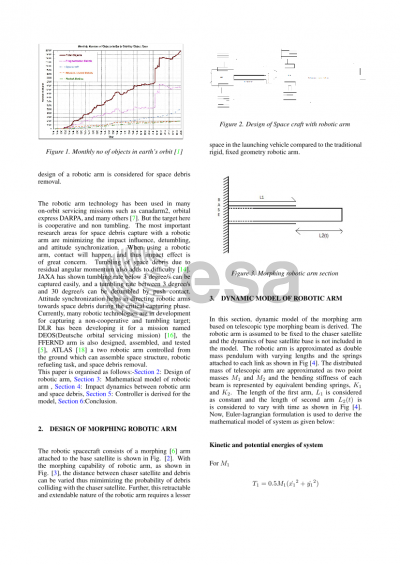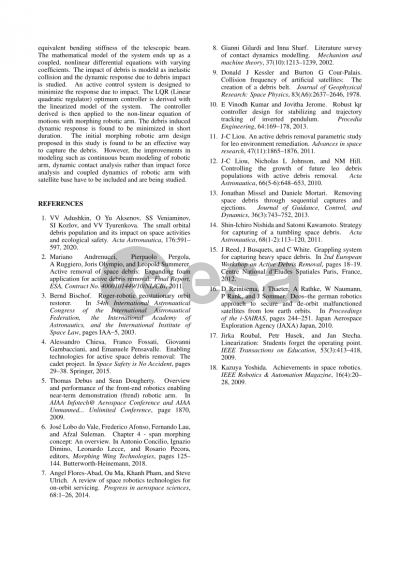Document details

Abstract
The space debris has been exponentially increasing and their orbital decay takes a very long time. Space debris possesses a high amount of kinetic energy as they are moving with orbital velocity. They cause severe damage to active satellites by collision and their removal becomes necessary. There are many space debris capturing and removal concepts such as net capturing, tether capturing, harpoon, tentacles, and the robotic arm. The usage of a robotic arm to capture and remove active space debris seems to be promising for medium-scale debris and is the focus of this study. Typically, the robotic arm is considered as part of a secondary satellite which in turn is ejected and controlled by a primary or mother satellite at a near distance. After the debris is captured by a secondary satellite, it is feed to the primary satellite for further disposal.
The existing robotic arms are designed as rigid structures with fixed geometry. Therefore, while capturing the debris they may break due to the impact and create more space debris. Also, the satellite has to come closer to debris to capture the debris which risks the life of the satellite itself. To avoid these issues, a flexible, “morphing robotic arm” is designed in this study. The robotic arm based on telescopic type morphing-beam is designed so that the arm's length can be varied to make the capturing easy without the spacecraft going close to debris. In addition, the telescopic mechanism can be controlled such that the vibration due to the impact of debris can be minimized. The active variation of length of the telescopic arm changes its inertial distribution and results in an auto-parametric system. For dynamical analysis, initially, the telescopic arm is approximated as a double pendulum with the variations in length executed by an active control system. Elastic stiffness and the robotic arm's mass distributions are modeled as equivalent bending spring and point mass of the double pendulum, respectively. Equations of motion derived with Euler-Lagrange formulation results in nonlinear, stiff-coupled differential equations which show considerable numerical instabilities. A control mechanism for active variation of arm’s length is considered. A plastic-collision is considered for contact-dynamics between the space debris and robotic arm during the capturing process. The dynamic response of the morphing robotic arm due to debris impulse-momentum transfer coupled with the variation of arm’s length is studied. The variation in length results as a pseudo-damper for the system thus changing the vibration of the system. The dynamic response and active control system of morphing robotic arm to minimize the impact of debris capture and the numerical simulation issues will be discussed in the full paper.
Preview






